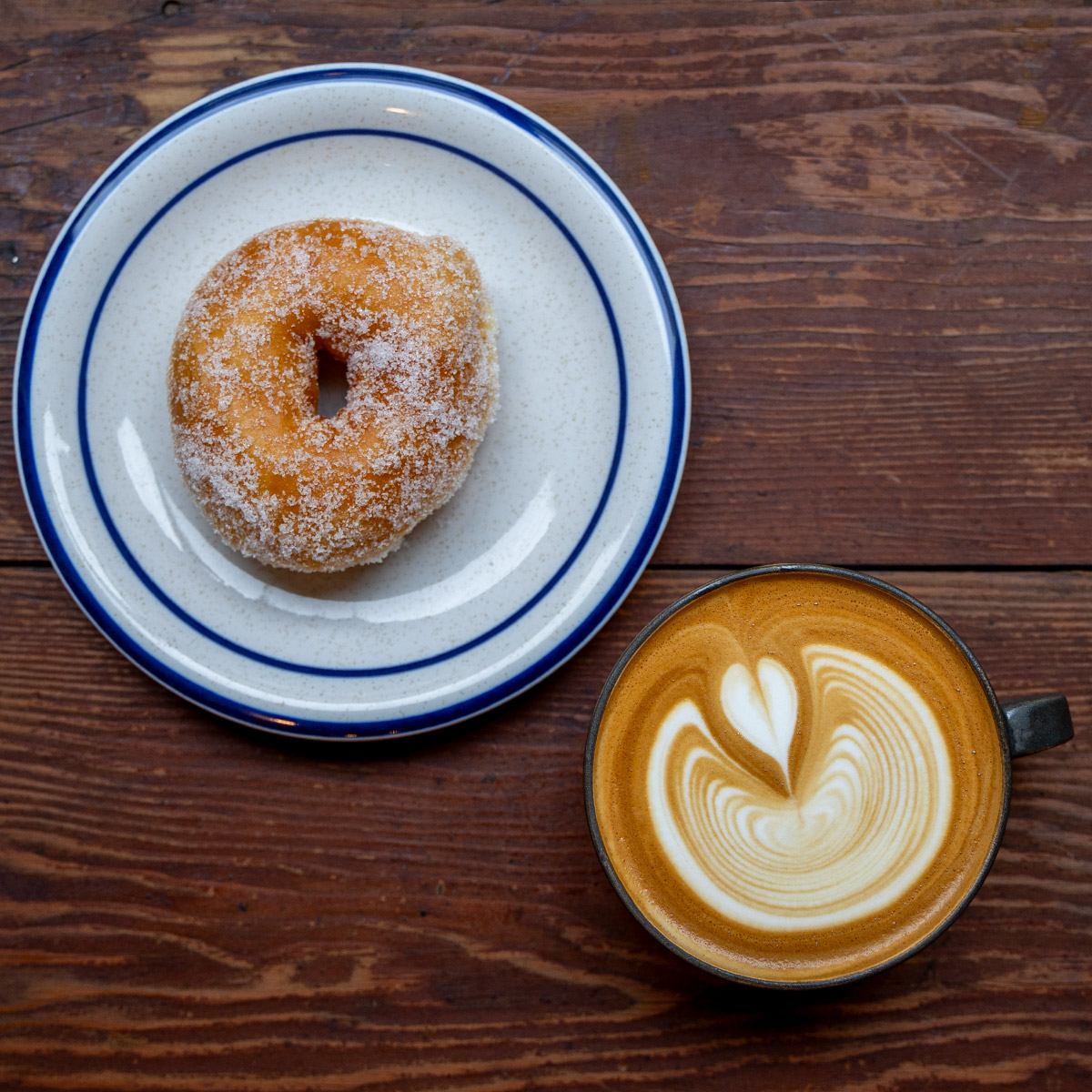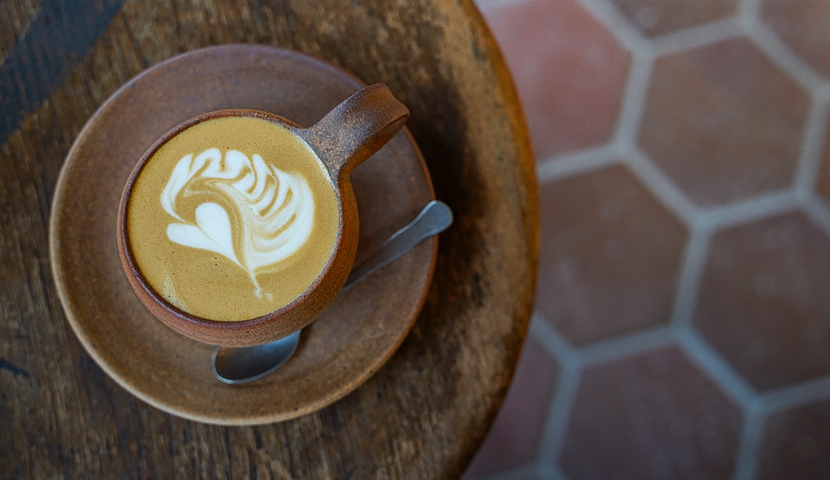
Must visit coffeeshops in Kyoto
MUST visit Coffeeshops in Kyoto Visiting Kyoto? Looking for a great place to get delicious coffee? Here is my shortlist of MUST Visit coffeeshops in
This café is permanently closed.
Located in North-West Kyoto, on a 10 minute walk from Kitanohakubaicho Station and a 5 minute walk from the famous Kitano Tenmangu shrine is this stylish and cozy café/guesthouse called ‘Jam Jar Lounge & Inn’. It’s run by a friendly Melbourne native who has been living in Japan for more than 25 years and who is really passionate about anything Japan. After working for 20 years in the Australian hospitality industry he opened Jam Jar.
Jam Jar’s name comes from the 1920’s prohibition era where people who would want to buy alcohol, which was illegal at that time, would bring a jam jar, knock on the door where illegal alcohol would be sold and fill the jam jar up with alcohol. This way the police would not suspect there would be alcohol inside a jam jar.
Jam Jar is situated in a beautifully renovated 110 year old machiya (traditional Kyoto wooden townhouse) that used to be a textile (silk) weaving factory. In recent years machiya have been disappearing due to high maintenance costs. While renovating the owner wanted to protect the historic value of the building so they left most of the original structure in place while adding some modern facilities.
It’s located in a residential area and it’s exterior has an authentic Kyoto façade with a wooden lattice frame window and door. To the right of the entrance is a fabric banner sporting the logo of the café, a nod to the silk factory that once used to be housed here.
Once inside Jam Jar you will be welcomed by a dimly-lit and cozy interior which consists of a cafe/seating area in the front near the entrance with two tables and a counter near the window with seats. Then there is the kitchen with two more counter seats and in the back a lounge area which can also be used as additional café seats.
The owner’s taste for the 1920s can be found throughout the café. The furniture consists of a mix of beautiful antique furniture pieces that the owner bought and shipped in one big container all the way from Australia. The furniture, the lamps, the art deco stained glass, all a nod to the 1920s.
The walls have been untouched machiya style sand walls which add to the cozy atmosphere of the café.
In the back of the café is the lounge area which is located beneath an inner atrium and consists of an antique livingroom table, red & yellow velvet chairs and sofa, with a large bookshelf placed against the wall that leads partially into the atrium above. Books are a big part of the interior and the lounge area is stocked up with them.
An interesting detail (not noticeable at first glance), upon closer inspection of the wall behind the yellow velvet two seater you will find that it’s covered with old Japanese newspapers. Something we have never seen before.
[Update] After getting in touch with the owner he told me that “they found the old newspaper dating from the Taisho-era (Taishō (大正) is a period in the history of Japan dating from 30 July 1912 to 25 December 1926, coinciding with the reign of the Emperor Taishō.) when they were renovating the Machiya. It was used to line the walls (not unusual for the times) of the original kitchen. “
He also said the following:
The floor too, is a combination of old and new. With the main floor being concrete, a part near the music corner consist of old wooden boards and the floor near the entrance of the inn still has stone remnants of the machiya. Another lovely detail that looks absolutely great when lit up at night.
There art deco stained glass windows placed throughout the café that the owner bought at a second hand shop near Kinkakuji also plays an important part in the interior and adds to that cozy retro 1920s atmosphere.
The menu offers quite a wide range of items including: toasted banana bread, Belgian waffles, muffins, toast, club sandwich and there is also a vegetarian breakfast plate. But Jam Jar’s special item is their Jaffles! What? Jaffles are Australian toasted sandwiches. Which come in 3 different flavors: Spaghetti Bolognese and Cheese, Curry & Cheese or Egg, Bacon, Spinach, Tomato and Cheese. Of course the writer forgot to take a photo of the Jaffles plate so here is a photo of a delicious club sandwich plate instead.
Everything on the menu is delicious and most important, not pricey at all.
The drinks menu is no different, here also a wide selection from various coffees, chai, hot chocolate, lemonade and yuzu. At times there is also Australian wine available.
We have concluded that the exterior is lovely, the interior is stylish and cozy, the menu is delicious, but what makes Jam Jar really special is the people. The owner is a friendly Australian who loves to share information about his machiya, Japan in general or just loves random banter. He also arranges custom tailored itineraries for his guests.
Then there are also friendly local residents who frequently pop in and have a chat. Fluent English speaking Japanese with interesting stories. If you are Japanese, don’t let the English scare you, everyone speaks fluent Japanese as well.
On top of that, Jam Jar is ideally located near world heritage site Kinkakuji (golden pavilion), Kitano Tenmangu shire and on a short busride from Nijo Castle or the Imperial Castle with huge park.
Jam Jar is one of our favorites and we heavily recommend visiting.
Hours:
Closed*:
Nearest Stations & Exit:
Randen Line – Kitanohakubaicho Station See map below
Bus Stop: Kami Shichiken (bus no. 10, 50, 51, 52, 55, 203) See map below
Randen Line – Kitanohakubaicho Station See map below
Bus Stop: Kami Shichiken (bus no. 10, 50, 51, 52, 55, 203) See map below
Wifi | Stroller Access | Breakfast | Date | Vegeterian | English OK | Lunch | One Person | Ideal for Outing | Wheelchair Access

MUST visit Coffeeshops in Kyoto Visiting Kyoto? Looking for a great place to get delicious coffee? Here is my shortlist of MUST Visit coffeeshops in

List of pet friendly cafes in the Kansai area.

A list of some of the best pizza places in Kansai area.
